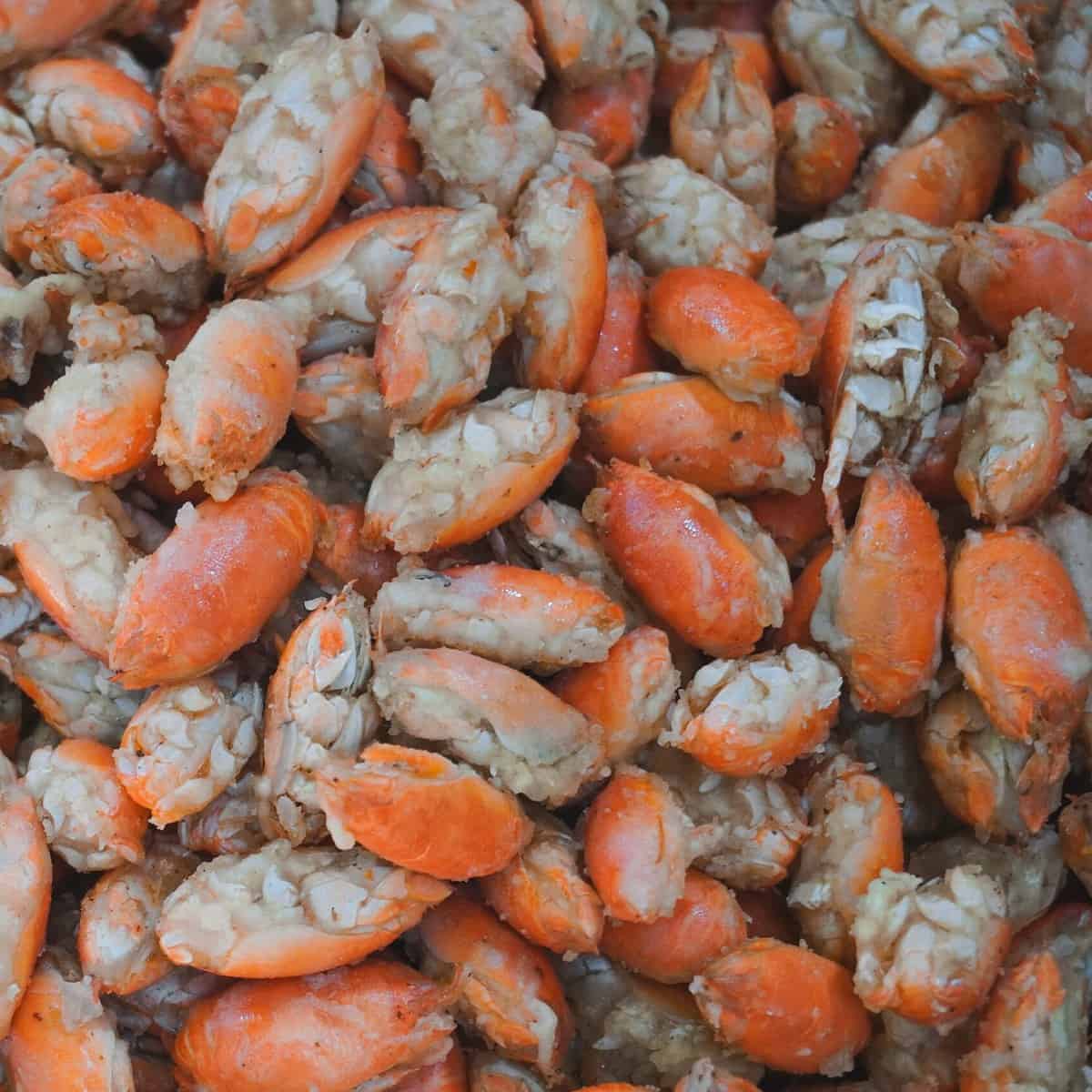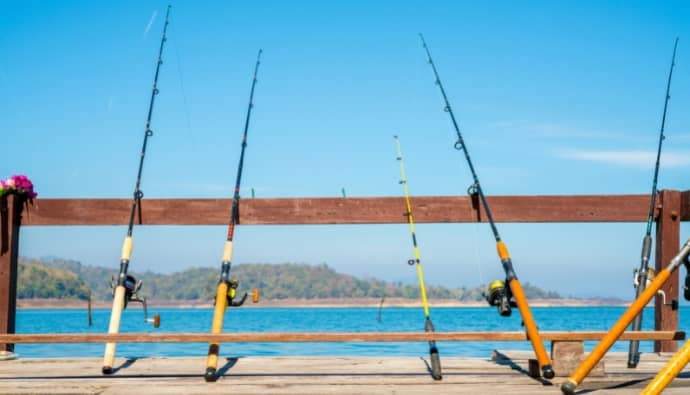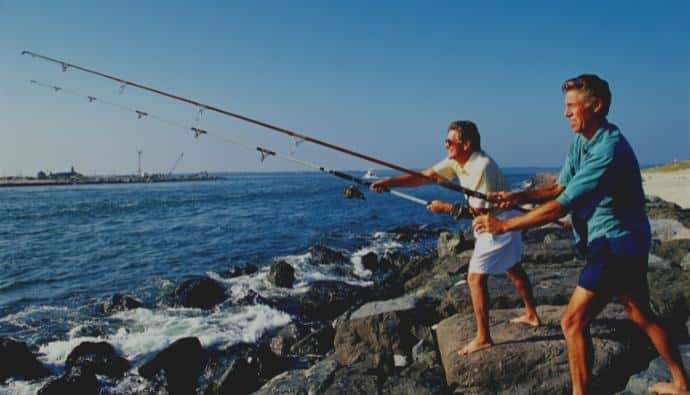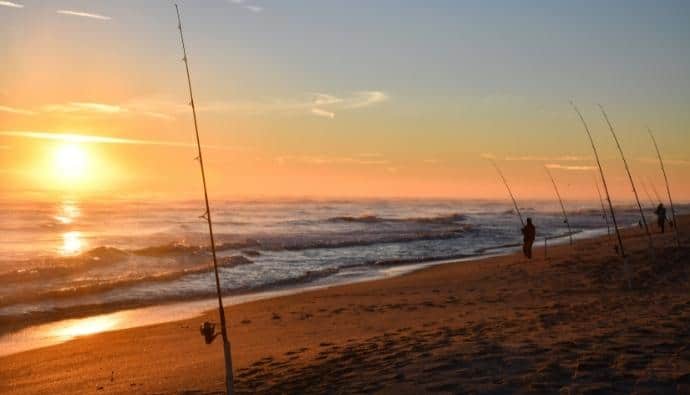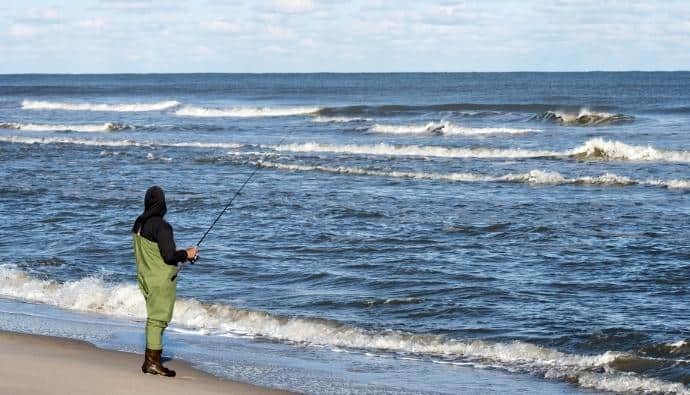Anglers can catch bluefish using various fishing techniques; the most popular forms are trolling, chumming, and casting. To catch this fish species, use wire leaders or a rigid lure that can’t break easily because they have sharp teeth. You can prevent bite-offs by using metal spoons or surgical hose eels.
You’ll also need cut bait or whole dead baits like minnows to attract the fish. When there’s no wind, a trolling motor spooks bluefish; therefore, you need to stake out, drop the anchor and wait for the fish to come to you. Alternatively, you can leave the boat and wade when the water is shallow to avoid spooking the fish.
Whether you are a beginner or a seasoned angler, you need to know the different techniques to use to catch big bluefish. This guide will look at the lures to use, the best baits, popular fishing methods, popular places to fish bluefish, and more.
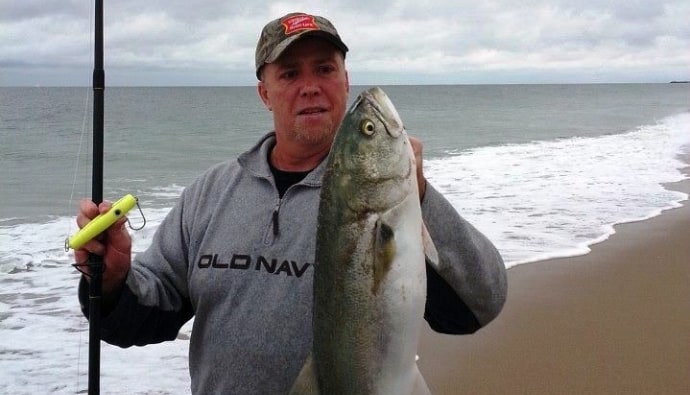
Best Bluefish Fishing Techniques
Catching bluefish is not complicated because they are several methods. Depending on the location, season, fishing habits, and personal preferences, you can use one or more methods.
If you are planning a fishing expedition, here are some options you can use to make the experience more productive.
Casting
Anglers can catch bluefish by casting from the shore, a dock, a boat, or a pier. To catch this fish, cast the lure and let it land at your desired depth. Retrieve the lure by reeling it in towards you.
Live Trolling
Live trolling is popular among anglers because it’s easy and quite productive, especially during the early season when the fish are still offshore. Trolling anglers use metal trolling spoons to prevent bite-offs during fishing because bluefish have razor-sharp teeth.
Additionally, you can use surgical hose eels because most come with a wire to secure the hook inside. Therefore, the bluefish won’t bite it off.
Chumming
Anglers anchor their boats in an appropriate location and place ground or cut-up fish, such as menhaden, or spot as a bait fish in a bucket with water. For chumming to be productive, you must use wire leaders so that the bluefish won’t bite your hook off.
Baits and Lures for Bluefish
Now that you know the different methods to get bluefish, let’s dive into the best baits and lures. While seasoned anglers may be more experienced in the best gear, beginners need tips on getting started.
Best Bait for Bluefish
Generally, bluefish are voracious and have sharp teeth; therefore, you need plenty of bait to catch them. Although they are not picky when choosing bait, they have some preferences.
You can use artificial bait; however, live baits are the best option. Some great options to consider include oily fish like eels, menhaden, mackerel, and cut fish.
Additionally, as you learn how to catch bluefish using cut bait, you should cut the chunks in the shape of small bait. Alternatively, you can use whole dead bait fishing by adding minnows on the hook. Make sure to bring your minnow bucket!
Best Lures for Bluefish
When fishing for bluefish, the best lures to use are metal spoons, white bucktail jigs, and plastic imitation baits. You should use shiny lures and keep the spoon moving at a fast pace to get the fish’s attention.
Additionally, topwater baits are a great option if you want to entice bluefish. To make it easier to catch them, move the artificial lures in a zig-zag motion to mimic a wounded bait fish, which is an easier meal. If the bluefish sees this, it increases your chances of catching fish.
Where to Find Bluefish
Before you set out on your next fishing adventure, you must know the popular places to find bluefish. If you are unsure about where to begin, this guide will give you some important tips to help you catch fish.
Distribution
Bluefish mostly appear in the Chesapeake Bay and its tributaries, where they feed on blueback herring and striped bass. They can also be spotted in the Atlantic Ocean and along the Gulf of Mexico.
However, they are migratory creatures and prefer to stay in areas with temperate waters between 45-80 degrees. You will likely catch these fighting fish from May to October along the Mid-Atlantic coast and the Chesapeake Bay.
If you regularly engage in saltwater fishing, you are more likely to get bluefish in waters with higher salinities. When salinity drops in the Bay area, bluefish migrate to saltier waters. You should try the ocean in wreck or reef sites to catch larger bluefish. Additionally, some large bluefish can be caught during surf fishing in the fall and spring.
Time of the Day
An advantage of fishing this species is their high availability. While most species are mostly available in the early morning and dusk, on overcast days and low light conditions, bluefish can be caught at any time of the day.
Finding Bluefish
Before you set out into the waters, check fishing maps and charts, use a fish finder or ask locals about the best places to fish. This is important because bluefish become skittish around anglers casting lures.
You can watch out for seabirds diving into the water, which could indicate there are large schools of bluefish in the area. You should also watch the tide keenly; bluefish come out to feed during the first hours of a falling tide.
Identifying Bluefish
Anglers can easily identify bluefish during saltwater fishing from the following characteristics:
- They have sharpened teeth
- Blue-greenish color with silver sides and white underbelly
- Pointed snout
- Blunt and large head
As you surf fish, you need to take extra precautions not to spook these bluefish blues. This is because they are quite aggressive and can do some damage if they bite you.
Can You Fly Fish for Bluefish?
Yes, you can fly fish for bluefish on flats. Fly anglers use 10 or 11-weight floating lines and 9-weight rods to catch them. Overloading the rod during fly fishing ensures that the casts are more productive.
Conclusion
Once you’ve caught bluefish, ensure that you place your hands away from the mouth area to avoid being bitten. In addition, if you plan to cook your catch, bleed the fish and then pack it in ice immediately to keep it fresh.



 Facebook
Facebook YouTube
YouTube